Panels Discuss Departmental Practices, Tribal Considerations, and Stakeholder Perspectives
September 28, 2018The first full day of the LTS Conference was dedicated to panel discussions. Each panel incorporated a diverse collection of speakers representing numerous organizations that all contribute to the cause of stewardship of remediated sites.
Panel: The DOE Complex Approach to Long-Term Stewardship
- David Shafer, LM (Moderator)
- Carmelo Melendez, LM
- Andrew Griffith, DOE Office of Nuclear Energy (NE)
- Ahmad Al-Daouk, National Nuclear Security Administration (NNSA)
- Elizabeth Connell, Office of Environmental Management
- Karen Baker, U.S. Army Corps of Engineers (USACE)
Senior-level DOE and USACE representatives discussed the role of long-term stewardship throughout the DOE complex, meaning not just in LM but also in other parts of the Department and in cooperating agencies. The speakers emphasized the need for flexibility and adapting to new challenges.“This is not a static program,” Andrew Griffith said. “We are always ready for change, looking at how we can improve things—how we can plan for the future.”
Carmelo Melendez stressed that engineering problems have a human side, something he wished he’d learned early in his career. “We don’t have a monopoly on solutions,” he said. “We can’t come to the table arrogantly thinking we know the only way forward.”
All of the panelists stressed the importance of working with tribal nations and local communities.
“The bottom line is we come from different places and different organizations,” Karen Baker said. “But all share the same value of protecting communities and restoring land so it can be put back to use.”
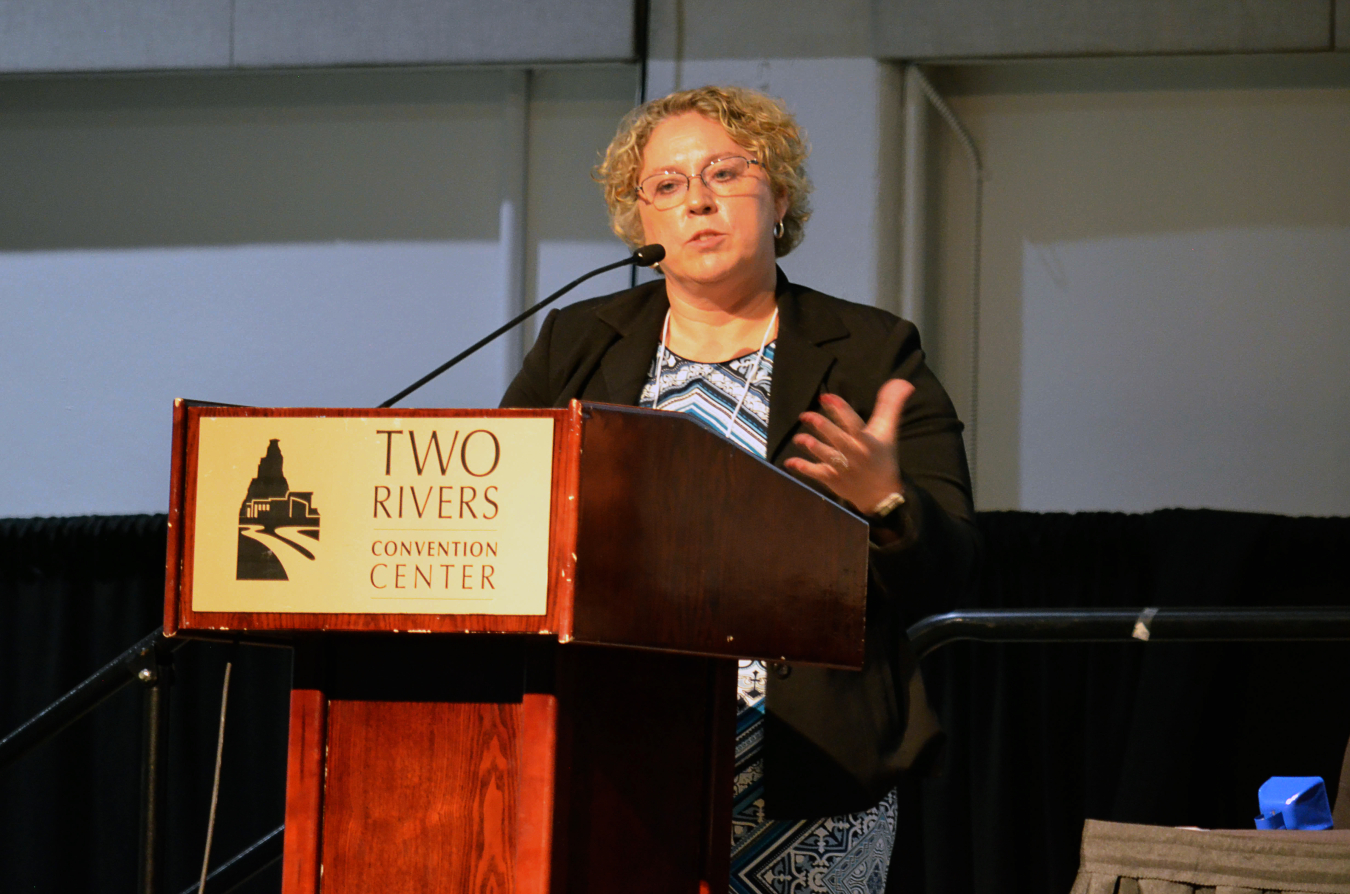
Karen Baker shares her experience with long-term stewardship projects while working for the U.S. Army Corps of Engineers.
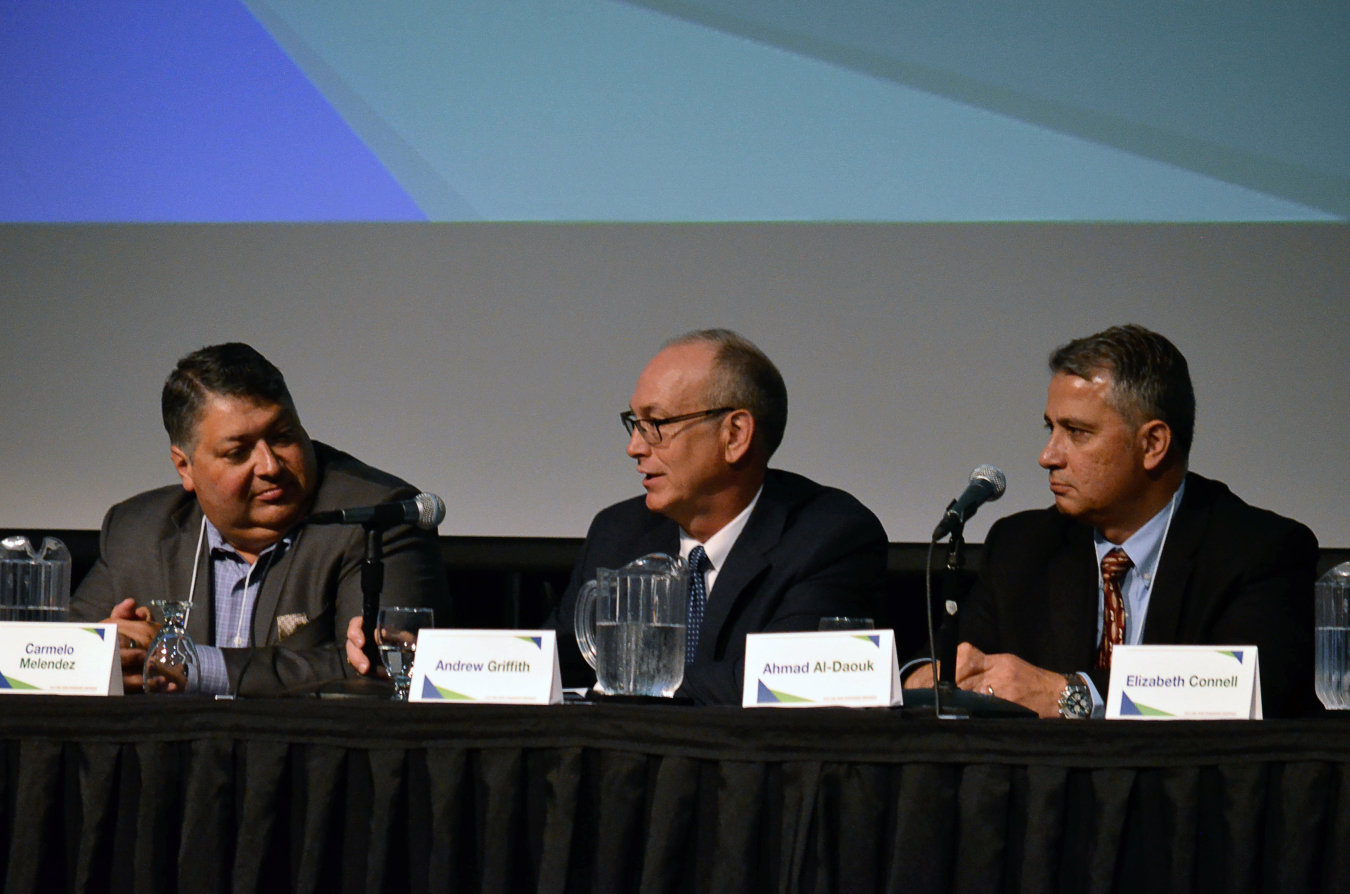
Andrew Griffith (middle) presents on the efforts of DOE Office of Nuclear Energy. Also pictured: Ahmad Al-Daouk
Panel: Practices, Tribal Considerations, and Perspectives
- Milton Bluehouse, Navarro Research and Engineering, Inc. (Moderator)
- Raymond Martinez, Pueblo de San Ildefonso
- Kevin Frost, DOE Office of Indian Energy Policy and Programs
- Madeline Roanhorse, Navajo Nation Abandoned Mine Lands (AML)
- Teara Farrow Ferman, Confederated Tribes of the Umatilla Indian Reservation
- Ira L. Matt, Office of Native American Affairs, Advisory Council on Historic Preservation
The theme of working with tribal nations carried into the second panel, which focused on the perspectives of those working with and within these communities.
Citizen of the Navajo Nation, Milton Bluehouse, who moderated the panel, opened with a brief history of tribal-related policy and legislation, such as DOE Order 144.1 Department of Energy American Indian Tribal Government Interactions and Policy and the American Indian Civil Rights Act.
Acknowledging the importance of working with over 500 federally recognized tribes, Bluehouse called upon all attendees to incorporate tribal culture into stewardship-related remedies.
Bluehouse’s plea was echoed by panelists—each of whom provided insight into how to empower tribal communities.
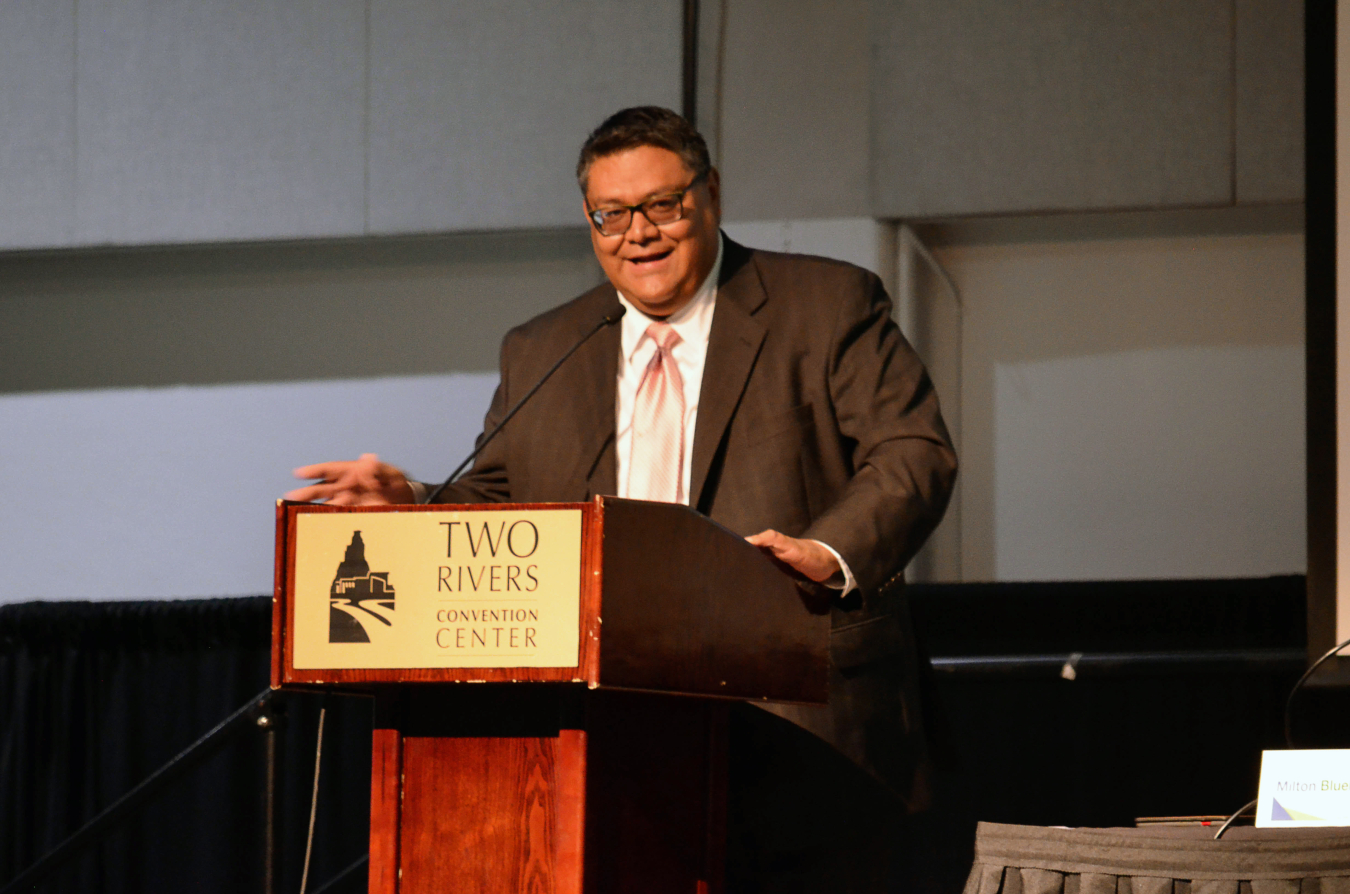
Milton Bluehouse moderates the panel discussion regarding long-term stewardship on tribal land.
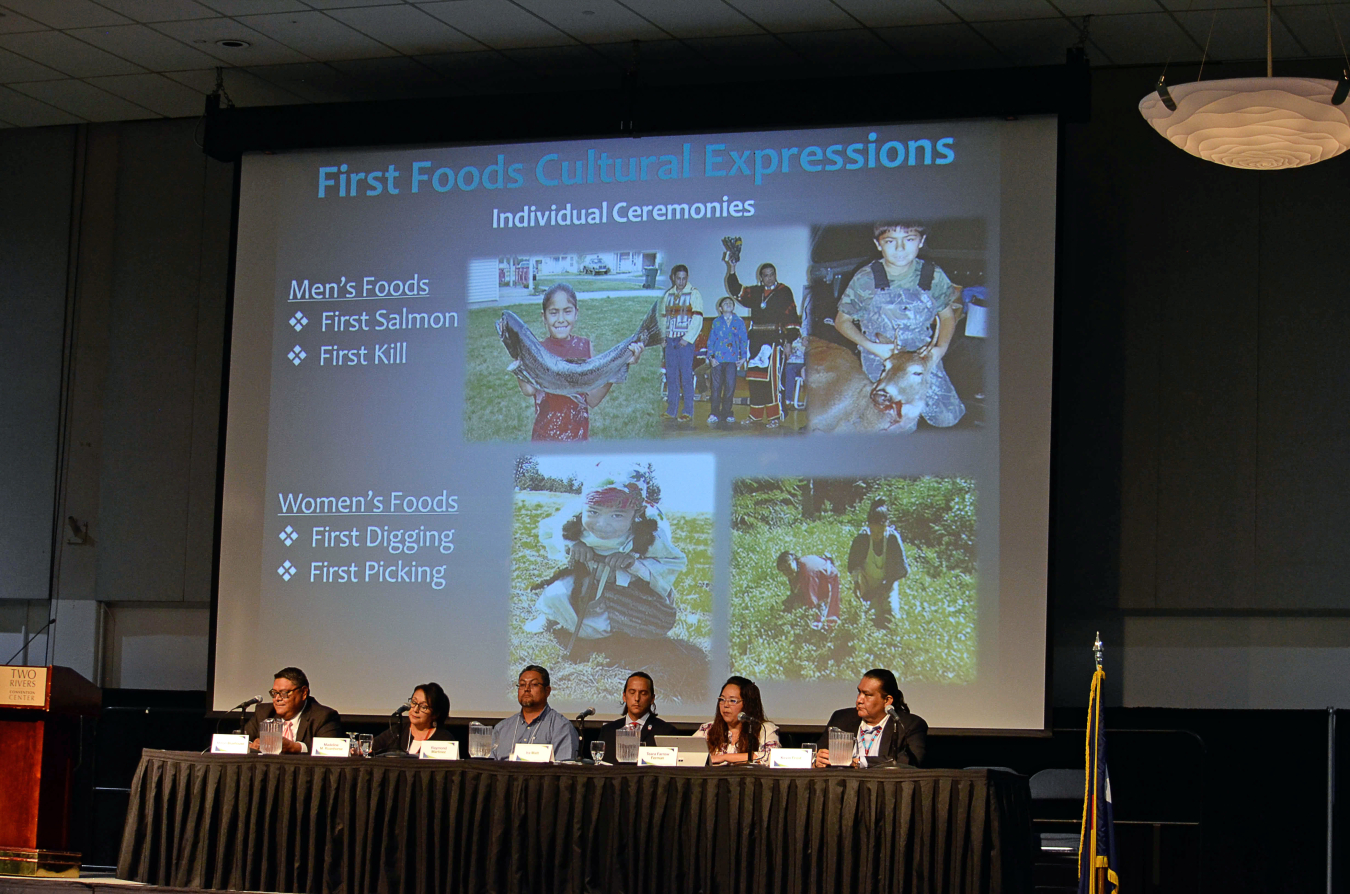
Teara Farrow Ferman (second from right) presents on the importance of “first-food resources” in tribal culture.
Many of the panelists stressed the value of incorporating the deeply held cultural beliefs and practices into remediation planning. For example, Kevin Frost recommended leveraging the “indigenous knowledge” of the community’s spiritual leaders during initial conversations.
“Tribes have an expectation of being a part of a substantive process,” Frost said.
Panelists urged attendees to avoid “one size fits all” solutions in addressing the diverse needs of tribal communities.
“Sometimes the systematic approach can be a roadblock into reaching consensus between tribes and federal agencies,” Ira Matt said.
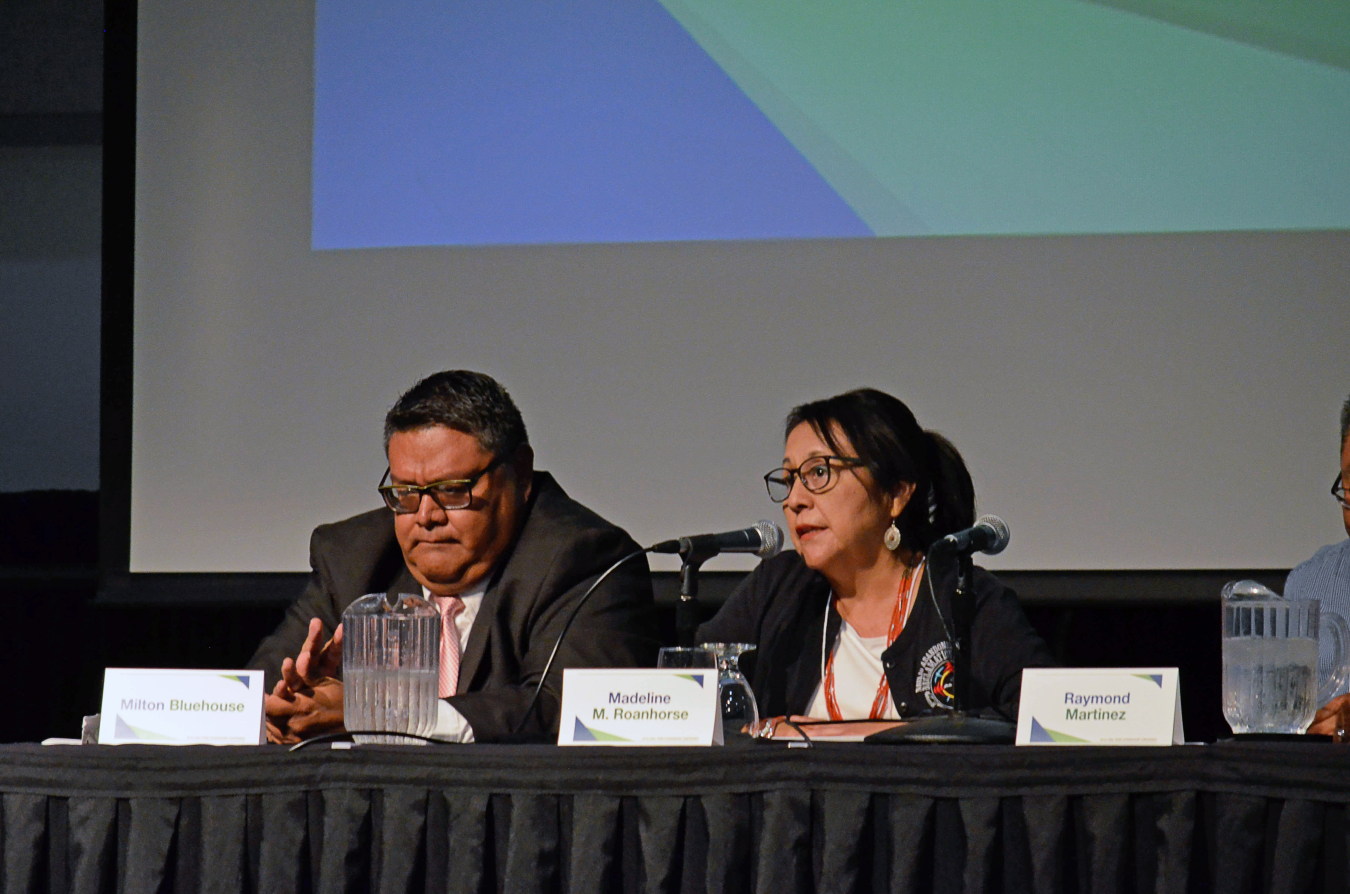
Panelist Madeline Roanhorse, Department Manager for the Navajo Nation Abandoned Mine Lands program.
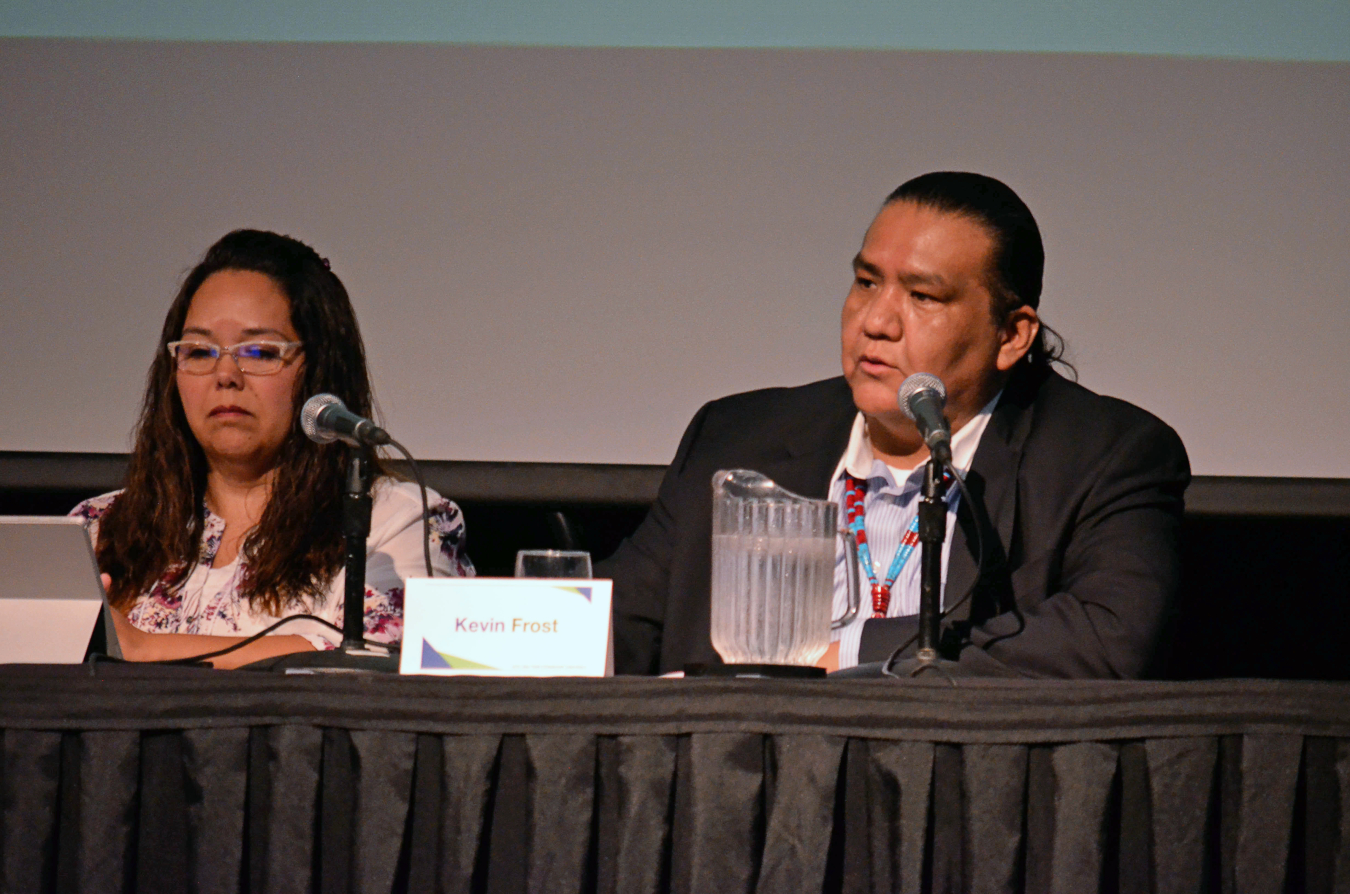
Kevin Frost (right) provides best practices on how to engage with native communities.
Panelists also shared the deep-seated connection that tribal communities share with the land.
“Natural resources are cultural resources,” Matt continued.
Bluehouse closed the discussion by reminding the audience of the value in learning from and embracing tribal culture.
“We are the image of our ancestors,” Bluehouse said.
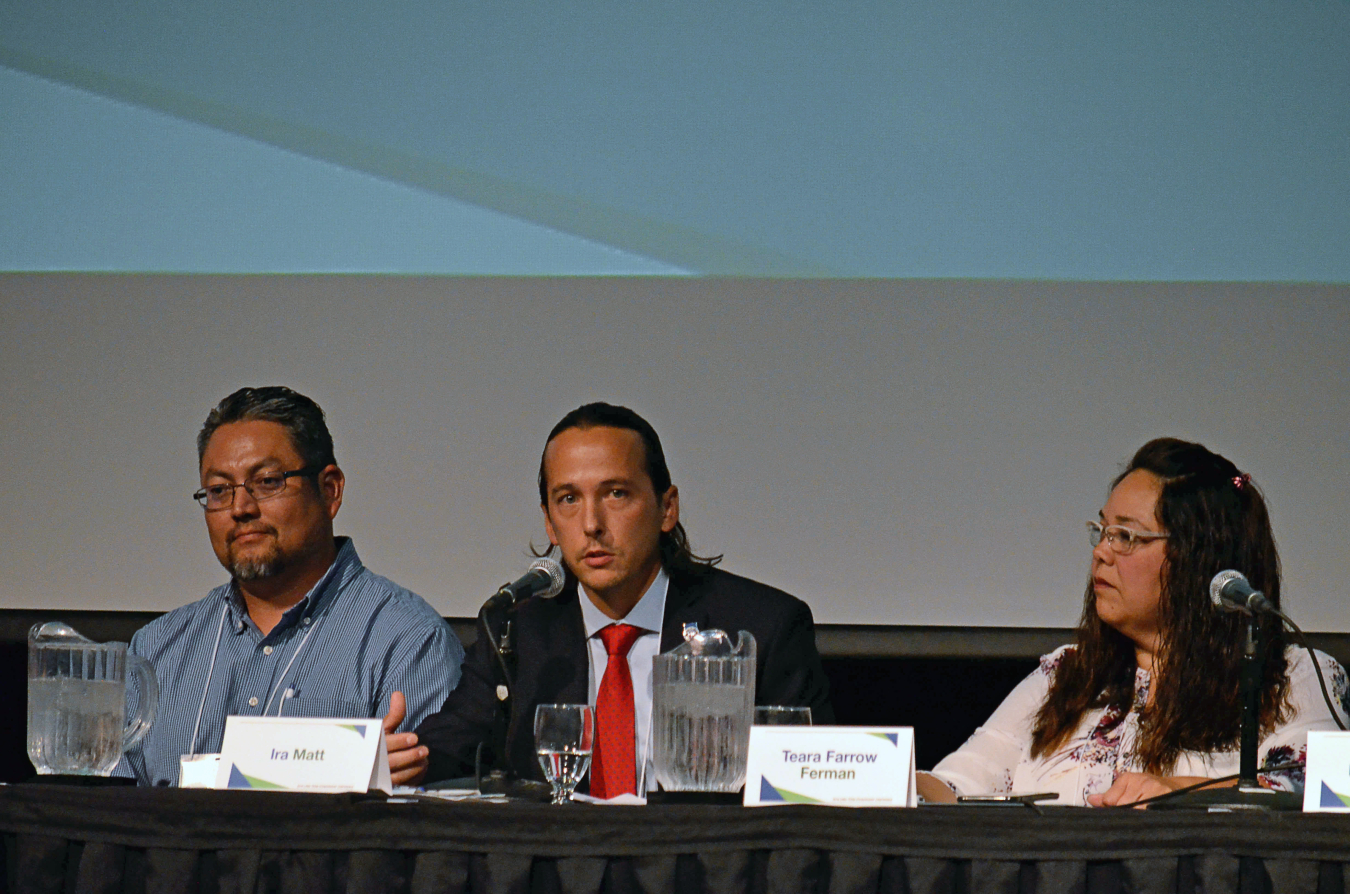
Ira Matt (middle) encourages conference attendees to leverage tribes as a “full partner” during the development of long-term plans.
Panel: National Stakeholder’s Organization
- Tony Carter, LM (Moderator)
- Megan Casper, Energy Communities Alliance
- David Abelson, Abelson Partners
- Brandt Petrasek, EM
- Carolyn Hanson, Environmental Council of States
- Sara Fields, Uranium Watch
Panelists from major stakeholder groups shared perspectives on project management from a community’s perception and perspective.
Multiple panelists mentioned the changing landscape of citizen knowledge about legacy environmental projects.
“Our call is reportedly different than in 2001 and since the last conference,” said David Abelson who worked on the Rocky Flats, Colorado, Site—one of the most significant and challenging nuclear weapons plant cleanups and restoration projects to date.
Brandt Petrasek said, “It’s inconceivable to see what the long-term effects are [when performing work].”
Government organizations must constantly educate and update key stakeholders and political leaders about their ongoing projects as they progress.
“Long-term stewardship means the buck stops here,” said Megan Casper. “Government is ultimately responsible for human health and the environment as the land manager archivist. We are the watchdog of local elected officials.”
The panelists agreed consistent communication builds trust. Various monthly briefings help community members learn more about projects and have their questions answered.

Megan Casper discusses the role of Energy Communities Alliance in acting as a “watchdog” in stakeholder communities.
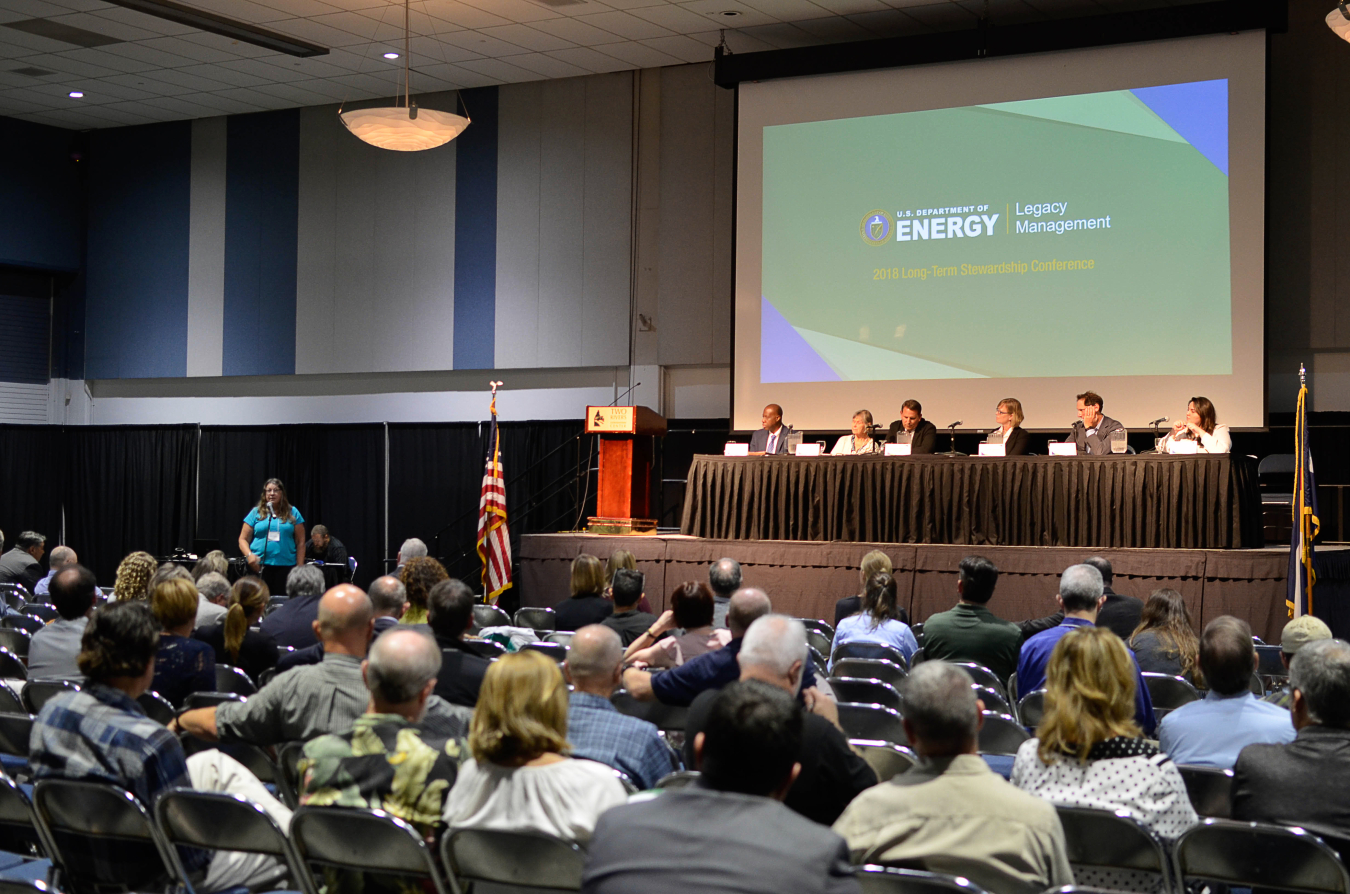
The panel fielded several questions from audience members.

